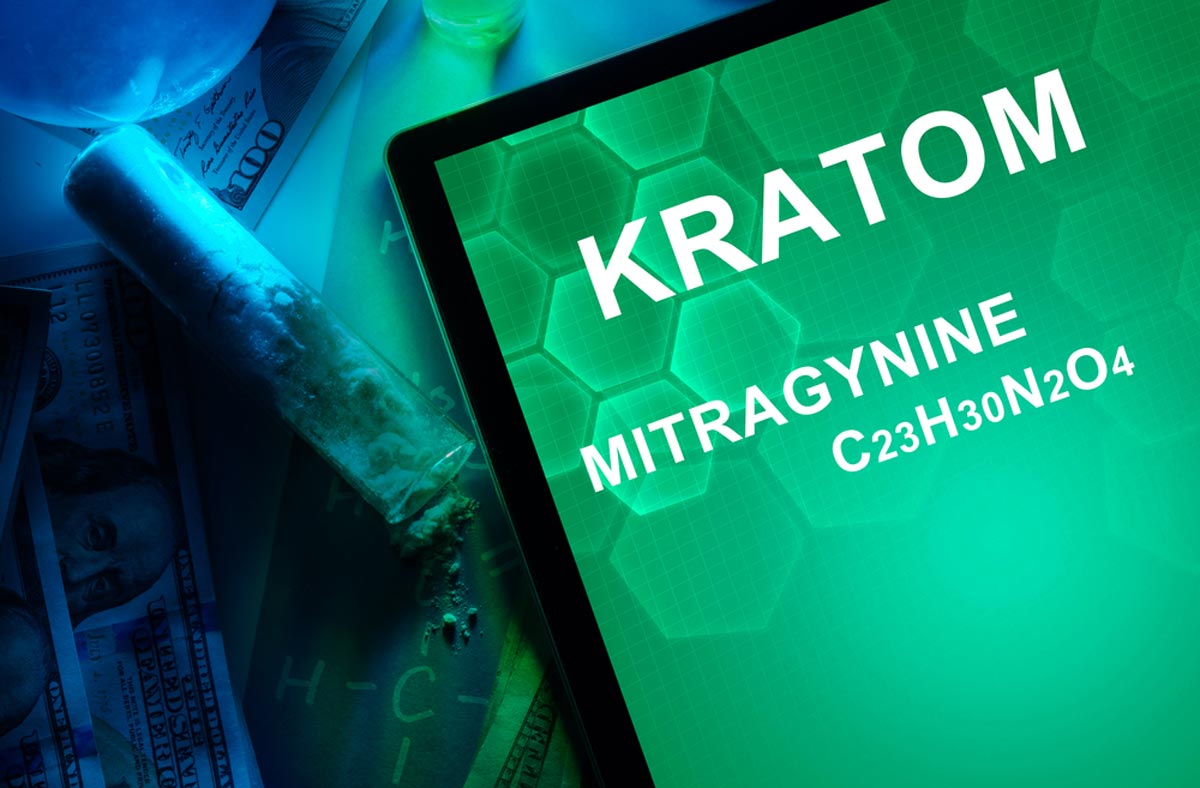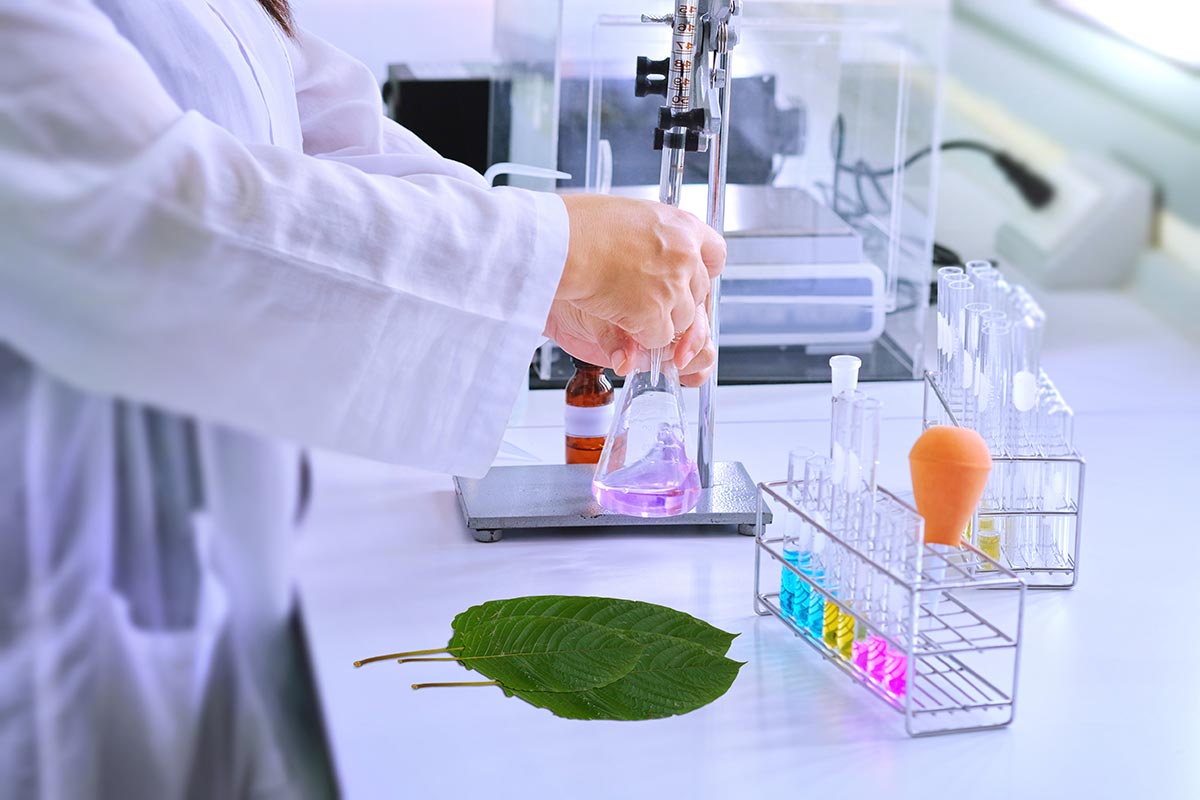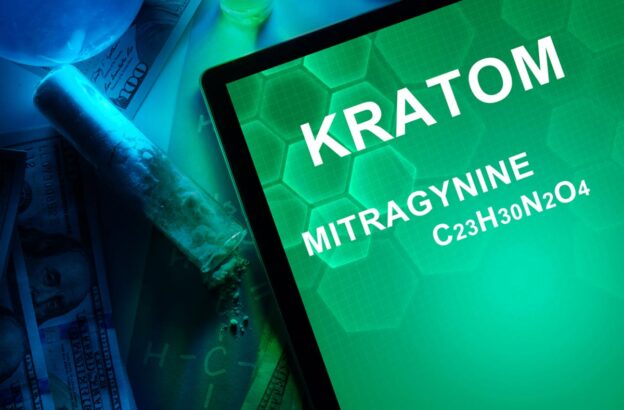Kratom is an increasingly popular recreational drug that’s moved into the U.S. market over the last decade. The drug is made from a tree, which is related to the coffee plant. That “natural” origin means that many people treat it as safe and no more potentially harmful than coffee or nicotine. At the same time, Kratom is banned in its home countries in Southeast Asia and is listed as a narcotic drug with opioid-like effects and addictive properties.

Today, 22 states have regulated or banned Kratom in the United States. Reasons are listed as addictive-tendencies, opium-like effects, and possibility of negative side-effects. Yet, in the United States, Kratom is still often treated as an herbal remedy, a withdrawal cure, and even a stimulant much like coffee.
What is Kratom?
Kratom is an extract from the tree Mitragyna speciosa. This plant is a relative of the coffee plant, and like the coffee plant, has a history of being used by natives for tea and as a stimulant. Historically, the leaves were chewed or used to make tea, much like the Coca plant (Erythroxylaceae) best known for its production of the alkaloid used to make cocaine. Like the Coca plant, Kratom is also composed of extracted alkaloids mitragynine, hydroxymitragynine, and 7-hydroxymitragynine.
At a low dose, e.g., you have tea or chew on the leaves or take a very small oral dose, the drug acts as a stimulant, much like cocaine or a strong cup of coffee.
At a higher dose, the active alkaloids bind with the opioid receptors and act as a narcotic sedative.
Is Kratom a Natural Drug?
A lot of people use Kratom because it’s a “natural” drug, after all, it’s just a plant. That argument doesn’t stand up in the face of science, because drugs like cocaine and morphine or heroin are also derived from plants.
In fact, Kratom is comprised of alkaloids that bind with the opioid receptors, just like heroin does. The more processed the drug, the stronger it is. For example, the plant contains Mitragynine, an analgesic that interacts with the opioid receptors. In its purest form, it’s estimated to be 7 times as potent as morphine. Hydroxymitragynine is a derivative of that drug, which is thought to be even stronger.
This means that kratom extract can be potentially significantly stronger than an opioid of the same dose. Both are of a plant-based origin but both have potentially extremely dangerous side-effects. In fact, both can potentially cause extreme side-effects when mixed with alcohol and both can risk overdose.
Get Your Questions Answered Now
Is Kratom Dangerous?

Many people use drugs like kratom as “healthier” alternatives to mainstream drugs. Some people also use it as a stimulant or as a withdrawal aid. In fact, many people start using kratom because they want to ease withdrawal symptoms. The result is often drowsiness, calm, reduced pain, sedation, anxiety, and light euphoria. In fact, the side-effect profile heavily maps to that of opioids, because Kratom interacts with the same parts of the brain.
In small doses, Kratom is relatively low-impact. In fact, most state regulations only impact concentrated doses. Some even explicitly allow small doses. In high doses, kratom can cause sedation, unconsciousness, seizures, and overdose. It’s also still poorly studied, so we don’t necessarily know what the long-term effects are.
However, Kratom overdoses can result in death. For example, in 2016, 152 people died after using Kratom. Here, only 7 hadn’t mixed Kratom with alcohol or another substance. In Florida, a 2023 investigation of all Kratom-related deaths between 2013 and 2022 found 587 verified kratom-related overdose deaths, 46 of which involved Kratom alone.
This means that Kratom can be dangerous on its own. However, it’s significantly more likely to be dangerous when mixed with other substances.
Kratom also has addiction tendencies. For example, one study showed that 94% of all long-term users developed symptoms of addiction. That’s especially common with heavy users or people who use it in a larger dose. For most people, using for 6+ months means you’ll experience cravings, psychological withdrawal, seeking behavior, and withdrawal symptoms.
Mixing Sedatives with Alcohol
Most people are aware that it’s not a good idea to mix sedatives with alcohol. In fact, most sedatives, even prescription drugs, have strict warnings not to use them with alcohol. In fact, alcohol is known to increase the effects of many other drugs. However, when you mix alcohol and another sedative together, it tends to enhance the sedative effect of both, meaning it’s more likely that you pass out, go unconscious, have difficulties breathing, go into seizures, or have an overdose.
That’s true for benzodiazepines like Valium, sleeping pills, and many other drugs. People sometimes use them together either out of carelessness or to increase the effects of the drug. In every case, they result in slurred speech, difficulty concentrating, light headedness, slowed or stopped breathing, blackouts, and a risk of sudden death.
Alcohol is a sedative and so is kratom. In high doses, both can cause overdose, seizures, difficulty breathing, and difficulty with bodily coordination. Both of them also increase the potency of the other, meaning that mixing the two can increase the risk of overdose and therefore your chances of having major medical side-effects from both.
Reasons Kratom is Dangerous to Mix with Alcohol
It’s never a good idea to mix drugs and alcohol, even when you think the drug is safe. Even mixing aspirin and alcohol can be extremely hard on your liver. Therefore, you’re not recommended to mix drugs and alcohol in any scenario.
There are a lot of reasons why you don’t want to mix kratom and alcohol:
- It’s not well studied; we don’t know what the long-term effects are
- Kratom is a sedative and that can increase the sedative properties of alcohol
- Alcohol tends to increase the sedative properties of opioid-related drugs like kratom, increasing the risk of overdose
- Alcohol and Kratom both cause seizures
- Most Kraton-related deaths involve mixing Kratom with another substance because Kratom prevents the body from metabolizing alcohol as well
Essentially, Kratom is dangerous by itself but much more dangerous when you mix it with another drug, like alcohol. It’s never a good idea to mix the two together.
If you or a loved one is using Kratom, it’s a good idea to slow down, stop, or talk to your doctor. Kratom can be an addictive drug, it can be dangerous, it can result in health problems and can even result in death. Treating Kratom like any other drug is important for ensuring you use it safely. That means keeping doses to a minimum, not mixing it with other drugs or alcohol, and ensuring that you understand the risks and side effects before you use it. Kratom is still legal and unregulated in many parts of the country, that does not mean it is safe – because much like coffee, the higher the dose, the higher the health risks.
I

